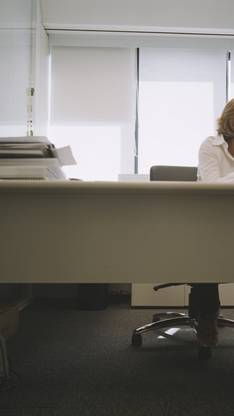Carla Schmitzenberger / São Paulo
Top of the flops
Havaianas flip-flops are the unofficial national shoe of Brazil. Since 1962, textile manufacturer São Paulo Alpargatas has made Havaianas that are worn by almost every Brazilian – from school children to celebrities. Last year, the company sold 162 million pairs. This month, the company will open an office and showroom in New York, its first outside Brazil.

Havaianas director, Carla Schmitzberger, is relaxed considering she and her 50-strong team have moved into their new São Paolo offices just a few days ago. The sun-filled fifth-floor space in an office tower in Vila Olimpia – a neighbourhood famous for nightclubs and the Daslu boutique, where customers arrive by helicopter – is filled with Havaianas financial analysts, and export and marketing specialists, who sit on brightly coloured office chairs. Schmitzberger greets Monocle wearing 7 For All Mankind jeans, a crisp white shirt and orange heels, but admits she changed out of flip-flops just before we arrived – and soon changes back. We are meeting to talk about the incredible sales phenomenon of the Havaianas flip-flop and its seemingly limitless opportunity to expand globally.
Monocle: How did you come to work for Havaianas?
Carla Schmitzberger: I’ve been here for a year, so I can take no credit for everything that’s been done with Havaianas so far – but I’ll take credit for what’s going to come! I started my career at Procter & Gamble in product development, worked for Johnson & Johnson and for the past five years worked in retail banking for Citibank. To come into a brand that is such a marketing case study, that wants to go international, and where my experience outside Brazil and my background helps, is just perfect.
M: Are you from Brazil?
CS: I have dual citizenship because my father was Austrian and my mother Brazilian. But I went to Cornell in the US and studied chemical engineering.
M: What was the tipping point that made Havaianas an international hit?
CS: It happened in 1993-1994, with the repositioning. Until 1993, Havaianas was a commodity – it was a poor people’s shoe. Then it became a fashion accessory and we moved into colours and prints. We now have more than 40 styles in Brazil and 78 different styles worldwide.
M: It feels like Havaianas exploded out of the blue on to the international scene. There must be more to the story.
CS: For 32 years, Havaianas made one style, in only five colours. It was the only shoe that many in Brazil could afford. But in 1988 sales started to sag and they declined further until 1992 when our projections showed that, if sales continued at that pace, we would have no more business by 2006. So in 1993 we started talking to consumers. We discovered some of them were pulling off the straps and turning the flip-flop around; that people in the top income levels were wearing Havaianas; and also that the presentation at point of sale – boxes in plastic bags – was not at all appealing.
M: So what did the company do to turn Havaianas around?
CS: First, we launched a new product that was monochrome – strap and sole all one colour – in 13 colours. We started selling them in boxes and we didn’t raise the price. Then we started advertising, showing celebrities wearing Havaianas. The success comes down to a continuous launching of product and print advertising with beautiful art direction.
M: Who does your advertising?
CS: Since 1993, we’ve used the same art director from Almap BBDO and he’s brilliant. They are some of the people responsible for the Havaianas turnaround.
M: Has the current government of President Lula been good or bad for business?
CS: The GDP growth in Brazil has been a little below what everyone was expecting – and footwear usually falls in line with GDP growth. Our opportunity to grow in Brazil is already much more limited than our opportunity to grow outside Brazil.
M: What are Havaianas’ biggest markets outside Brazil?
CS: Australia, the US, Italy, France and, surprisingly, Venezuela. Our difficulty in going international would be the exchange rate, which makes our product outside Brazil higher priced. We don’t make a penny more on a pair we sell outside the country. The margins fall to the distributors and the retailers.
M: So what are your plans for international expansion now?
CS: Last year, the company sold 145 million pairs of flip-flops in Brazil, 17 million overseas. Exports were 1 per cent of our business five to six years ago, and now we’re up to 11 per cent. International growth is between 43 and 45 per cent a year. By 2012, I would like at least 30 per cent of our total business volume to be from external markets. This June, we're going to invest in marketing and print advertising. We've also taken buildings, hired graffiti artists to paint them and then we're putting a huge rubber strap on them. Last year we were involved in a co-brand with Celine- they designed a print and we put it on a flip-flop that said Celine and Havaianas on it. I think we are going to do more partnerships like that.
M: How important is Brazil to the brand?
CS: What’s important is the Brazilian-ness of the brand. Brazilians are optimists, easy-going, very lively and unpretentious – and Havaianas have some of those characteristics. Plus, you feel good when you wear them.
M: Will you continue to manufacture Havaianas in Brazil?
CS: Today, 100 per cent of our product is made in northeast Brazil and will continue to be. We’ve invested to increase the factory capacity 30 per cent by May. Our factory has about 4,500 employees. We work around the clock because we had a capacity constraint. Basically, we were selling everything we could make.
M: Who do you consider as competition?
CS: We’ll be going after some of the Crocs business in the US. And Grendene has expanded internationally and also brought in Gisele to endorse its sandals. Her presence has tremendous appeal.
M: Do you wish you had got her to advertise your brand?
CS: No, because it’s borrowed interest. We’ve never paid anyone to wear Havaianas. I’d rather build the value of our own brand than use a personality. And she’s been caught wearing Havaianas a couple times which is just brilliant!


